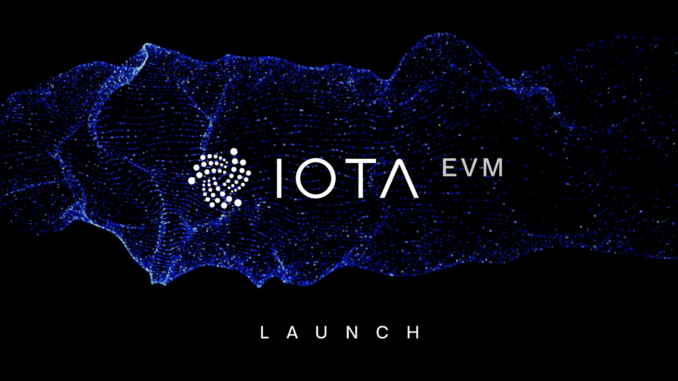
After months of delay, IOTA launched its Ethereum Virtual Machine (EVM) yesterday. IOTA is hoping that the project will lead to monetary expansion. However, the crypto markets are reacting with cautious skepticism.
The champagne corks are popping at IOTA, with X and blog posts celebrating the launch of the Ethereum Virtual Machine (EVM). IOTA’s price curve rose by 7% following the EVM news, but remains at USD 0.23, which is a far cry from its high for 2024 of just over USD 0.41. The big question is: Is the EVM, a standard module of the crypto industry, really the impetus for IOTA to help the once so successful cryptocurrency achieve a sustainable upward trend?
In general, the EVM allows smart contracts to be organized across ecosystems, making it virtually indispensable in the decentralized finance (DeFi) sector. Its launch at IOTA was planned for the first quarter, but the deadline was missed. IOTA Foundation CEO Dominik Schiener now writes on X: “No matter what you think about IOTA, one thing is clear, we will never stop building. We have been in this market since 2015 and will continue to be here to realize the full potential of the blockchain.” When IOTA’s price curve even temporarily broke the USD 5 mark at the end of 2017, the cryptocurrency was still listed among the 10 most capitalized in the world – IOTA is no longer in the top 100.
EVM at the IOTA side project Shimmer is a failure
The problem: more than 150 other crypto projects have already integrated EVM and are competing with each other to attract DeFi capital. The data from DeFiLlama shows Ethereum (ETH) as the absolute market leader and six other established ecosystems for which the key indicator TVL is over USD 1 billion. The race to catch up announced by Schiener, which is intended to bring IOTA back into the limelight with the help of the EVM, is therefore starting from the bottom. The EVM has been available for the side project Shimmer since September 2023, but has attracted little attention despite an extensive advertising campaign and currently measures around USD 4 million TVL.
According to its own advertising, IOTA wants to boost its late EVM debut with dozens of DApps and other tools. However, according to the official blog post, the list of IOTA EVM services available immediately is much shorter. In order to connect to the EVM with the IOTA wallets Firefly or Bloom, a detour via MetaMask or other Web3 wallets is required, as well as a special access point. Whether the IOTA EVM is actually 100% compatible with those of other ecosystems in this respect remains to be seen in practice.
Conclusion: IOTA EVM is live – what happens now
The IOTA Foundation recently announced that it wanted to accompany the launch of EVM with a lot of PR and strong partners. There has been little sign of this so far, with a promotional video featuring Italo sounds being mocked online. It is also striking that IOTA has not received any congratulations from major crypto projects. The ongoing lack of decentralization of the IOTA network is a factor that diminishes trust and distinguishes the project from the blockchains of almost all other cryptocurrencies.
The IOTA EVM Explorer, which you can find here, does not even show 4,000 wallets that have registered so far. DeFiLlama, as an independent and neutral authority, does not yet provide any data on the IOTA EVM, but this should change soon. Then we will also have an initial overview of whether the EVM will find favor with IOTA or remain stuck in insignificance as with the side project Shimmer – because as I said, the competition for EVM market share is fierce and the history of IOTA is fraught with many failures.

Leave a Reply